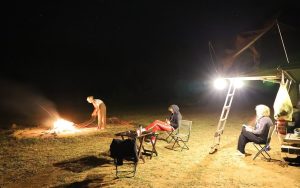You may need a full pat-down to enter the Garden City shopping complex or the New Vision daily newspaper offices after terrorist attacks last July in Kampala. But unlocked refrigerators and vacant security points guard dangerous germs in Ugandan and Kenyan laboratories, the Pentagon witnessed on a current trip to East Africa. The Pentagon focused its gaze to East Africa last week, and a team of arms control experts and Indiana senator Richard Lugar headed to Uganda, Kenya, and Burundi to fight bioterrorism.
The U.S. government is concerned about easy access to dangerous germs on the African continent, particularly Anthrax, Ebola, and Marburg, which can be turned into weapons. Kenya and Uganda have laboratories where scientists study infectious diseases, but the laboratories typically have almost no security. Secretary of Defense Robert Gates says the trip will help the Kenyan and Ugandan government work more closely with the U.S. Center for Disease Control to secure the facilities, and prevent future disease outbreaks
In 1991, Senator Lugar, a Republican from Indiana, and Senator Sam Nunn, a Democrat from Georgia, created the Nunn-Lugar Act, which founded the Cooperative Threat Reduction Program, which uses the U.S. government’s resources to help the former Soviet Union dismantle stockpiles of nuclear, chemical and biological weapons. Congress expanded the act in 2003 to go outside the former Soviet Union.
The Al-Shabaab terrorist attacks in Kampala last summer only highlight dangerous potential security outcomes in East Africa. ”Deadly diseases like Ebola, Marburg and Anthrax are prevalent in Africa,” said Lugar. ”These pathogens can be made into horrible weapons.”
The U.S. embassy has warned of potentially more terrorist attacks in Uganda. Uganda is a close ally of the United States in the region, particularly in Somalia, where it runs an African Union mission.
In Uganda, the Pentagon delegation and Lugar visited Uganda’s Ministry of Agriculture, Animals, Industry and Fisheries’ laboratories in Entebbe, as well as the Uganda Virus Research Institute, where the New York Times reported anthrax and other viruses are stored in unlocked refrigerators, in buildings with broken windows.
After the Uganda trip, the group headed to Burundi, where they toured weapon-destruction facilities in Bujumbura, the capital. Burundi has large stores of light weapons and small arms, particularly AK-47 assault rifles, mortars, and rocket-propelled grenades, largely due to a 12-year civil war that ended in 2005. Facilities destroy the weapons to discourage regional conflict, as well as sales to potential terrorist groups, and are part of the Lugar-Obama program, which the Senate Foreign Relations Committee passed in 2007 to prevent the proliferation of weapons.
The U.S. State Department and the Defense Department help the Burundian government destroy the weapons. So far, they have destroyed 312 surface-to-air missiles, but there are still more than 200,000 small weapons in circulation in Burundi.
“Securing these weapons that are so common to conflicts in Africa and eliminating that proliferation threat is essential to security in this region,” Lugar said. “The situation is not unique to Burundi. But their willingness to work with us presents an exciting opportunity to remove this threat and show neighboring countries the U.S. wants to work with them, cooperatively, to improve the security of Africa and prevent future conflicts that will require U.S. and allied troops.”
Today, the group is in Kenya, where they visited a laboratory near Kibera, the largest slum in Nairobi, and one of the largest slums in the world. In the past, terrorist groups have reportedly gone into Kibera for recruitment purposes.
“The windows are broken, and a short concrete wall topped with barbed wire are all that prevent individuals from hopping the fence to steal Anthrax, Ebola, or other potentially deadly biological gents,” Lugar wrote on Facebook about the experience. The group visited three laboratories, all in Nairobi





